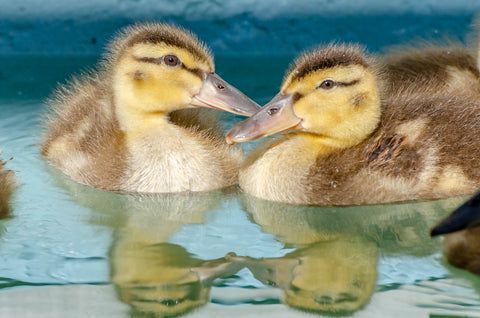
Notice: A $5.00 fee will automatically be added at checkout for physical mail-outs to cover printing and shipping. If recipient information is not provided, the certificate will be sent to the email or mailing address listed in the customer’s billing information.
(Anas platyrhynchos).
Date of admission: May 2025.
Reason for admission: Orphaned.
Patient History:
Mallard ducks breed throughout North America, Europe, Asia, and Northern Africa. The species has been introduced to New Zealand and Australia.
Mallard ducks living in northern climates migrate south to escape the cold winter months. In Canada and the northern United States, the majority of mallard ducks migrate into Mexico and are regularly spotted in Central America and the Caribbean islands.
Mallard ducks are highly adaptable and can be found living near lakes, rivers, fresh and saltwater wetlands, rural agricultural lands and in urban city parks. Unlike many other species of ducks, mallards have often benefitted from human disturbances to native habitats.
Their ability to adapt to changing environments has allowed their population numbers to increase in both rural and urban areas. Male mallard ducks, or drakes, are easily recognizable by their glossy green heads. Both the males and females produce the characteristic "quack,” stereotypically associated with ducks. Each spring, female mallards normally lay between 8-13 eggs which hatch after 28 days of incubation.
We receive ducklings for various different reasons, the most common being; a suspected orphan, and/or domestic animal attacks. All patients will receive rehabilitative care at our wildlife hospital until they are old enough to be released. Together they will learn how to forage for food and perfect their swimming skills. One warm summer morning they will be returned to the wild, and all will be able to continue to thrive and migrate together in the fall. Your sponsorship ensures they grow up strong and healthy under our care. In 2024, we cared for 236 Mallards at our facility.
